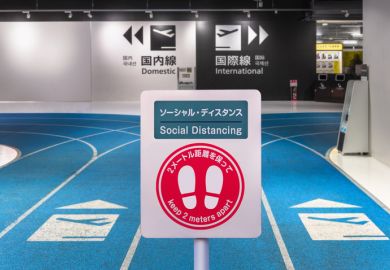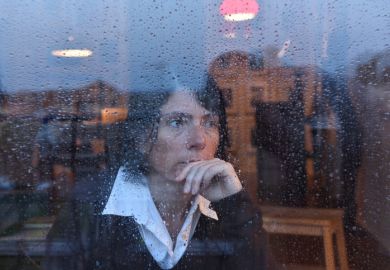Over an hour’s train ride northeast of Tokyo, in the regional city of Mito, Keiko Tomita takes a sip of green tea and smiles, recalling her all-girls high school not far from here.
“I hated it because they were always gossiping – I [wasn’t] interested,” says Tomita, now the president of Tokiwa University.
She isn’t a fan of surveys that make it appear as though Japan is an awful place for women. She prefers to look on the upside.
“Japanese women enjoy freedom, exercise equal rights with men, and our education is pretty much equal,” she says. “By and large, Japanese women are blessed by good opportunities [in] a very stable, peaceful society and well-off country.”
And she has seen first-hand how far her country has come. When she was at school more than 40 years ago, it was uncommon for girls from her town to pursue university in another city – something she very much wanted to do.
“Most girls at the time chose to go to university locally and it was still a big decision for parents to send them to Tokyo or outside this community,” she says. “My father had two conditions. One, it has to be a better school than the local one…and, two, it had better be a women’s school.”
When she graduated from Tokyo Women’s Christian University, Tomita was considered “over-educated” since women were still viewed as a “secondary labour force”. Going to a two-year “junior college” would have been an easier route into employment, with most companies expecting women to work no more than a couple of years before dropping out to raise children. Tomita, though, carried on to graduate school, before embarking on a long career at the United Nations.
As the president of Tokiwa since 2019, she now holds a highly respected position in Japanese society. When she represents the university off-campus, she is still “often the only woman” in the room, yet there are efforts to make progress. At a recent meeting of a dozen regional representatives, for instance, she was among only three women – but that was why she went.
“Women’s participation is still relatively limited, but it doesn’t mean there’s no hope,” she says. “I realised that when they approached me, they were actively looking for women…They feel they need to listen to [our] voice.”
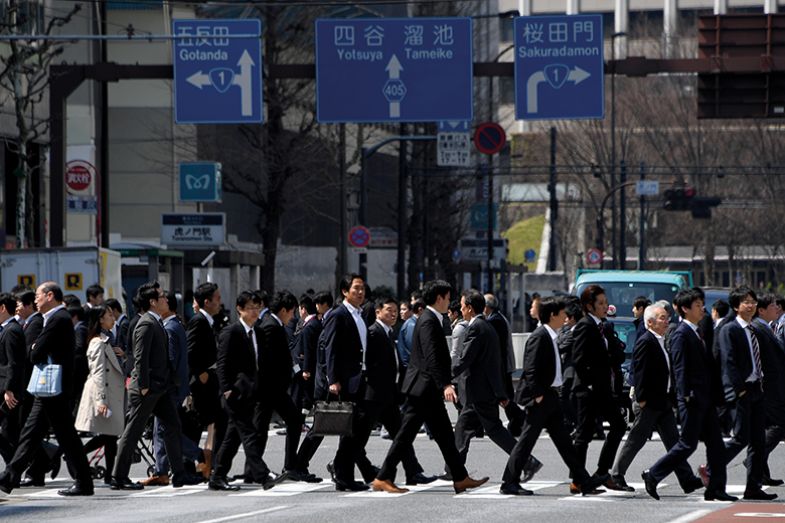
The statistics underline that need. This July, Japan scored lowest on the World Economic Forum’s Global Gender Gap Index among countries in East Asia and the Pacific and the Group of Seven major economies. Overall, the nation ranked 116th of 146 countries, ticking up slightly from 120th last year, but still below its neighbours South Korea, in 99th place, and China, in 102nd. And while Japan has reached gender parity on participation in primary and secondary education, it has fallen back on “economic participation and opportunity” because of a decrease in women’s workforce participation. The share of Japanese women in legislative, senior and managerial positions also decreased by 9.8 per cent – even while men’s share increased by 2.6 per cent.
Those figures may seem abstract, but in most Japanese universities, you only need to walk along the halls to feel a conspicuous absence. Although women make up roughly 45 per cent of Japan’s university graduates – a share that has been slowly rising over the past decade – their numbers begin to dwindle after undergraduate level.
A 2020 study showed that women account for fewer than 17 per cent of academic staff in Japan’s 86 public national universities, a group of semi-autonomous institutions that includes the country’s most prestigious universities. That is bad even by regional comparisons and is far lower than in the West; the UK’s academic staff were nearly 47 per cent female in the same period, for instance.
At the very top of the food chain, the number of women is smaller still; they make up about 10 per cent of the 750-odd presidents at Japanese colleges and universities.
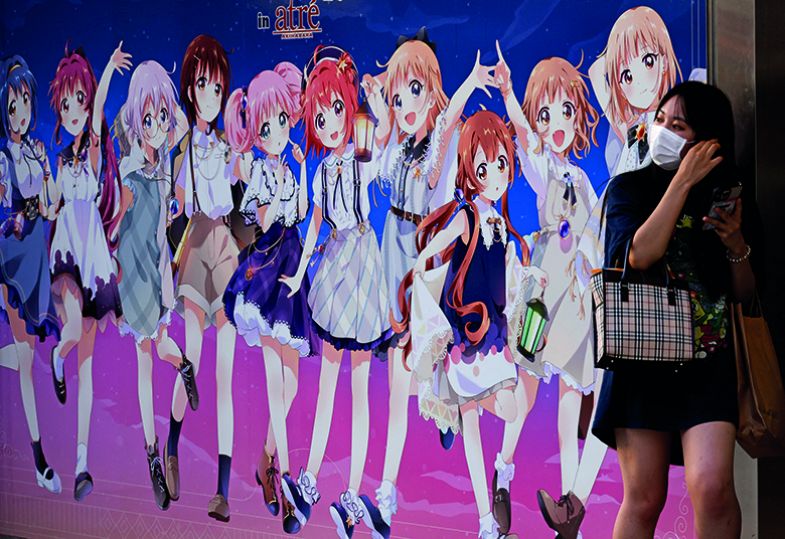
Kuniko Tanioka has been president of Shigakkan University, a small, private institution just outside Nagoya, for three decades. She took the helm at the age of 32, not long after she joined Shigakkan’s English faculty as a lecturer amid a power struggle.
Back then, Shigakkan was a women’s university, but Tanioka still found herself too young and too inexperienced to be taken seriously, and even she doubted her ability to lead.
“I did not feel like I was qualified at all to assume the role. I really was hesitant about that, but there was a need for leadership to finish this game of power and I felt [obliged] to do something,” says Tanioka. “My conclusion was that I was the closest to the students. Although I may not be enough as a leader for the scholars or for the staff, I could be the representative and the leader of the students.”
Having survived a precarious first few months, she was emboldened. Three years into her job, she attempted to reform another area where women’s participation was low, founding Japan’s first university-level women’s wrestling team. She had no particular love of wrestling, but she saw in it an opportunity to improve all sports for women.
In those days, male coaches were “creating a slave house of women’s athletes”, many of whom were constantly injured or missing their periods because of low iron levels. Tanioka thought this could “be so easily changed” if the university’s nutrition and training programmes could be linked up with its coaching. But she had received strong pushback.
“I talked and talked and talked to the coaches, but they said, ‘Shut up: you don’t know these sports – track and field, volleyball, gymnastics’…I determined that if existing teams don’t listen to me, I’m going to create a new model team, where women’s own leadership is valued and captains can make their daily exercise programmes, do everything scientifically.”
It was also a chance to produce champions. At the 2004 summer Olympics in Athens, the first time Shigakkan’s women wrestlers entered the competition, they began to win medals. Since then, the university has produced gold medallists in each Olympic games.
But Tanioka still wasn’t done changing the status quo. In another radical move, in 2010, she made her university co-educational.
Herself the product of a women’s college, she knew well their benefits: “There, women have to do everything as students – they become representatives of the student body, captains of teams. It really enhances women’s ability and leadership…It’s why women’s universities have produced more [university] presidents than other universities.”
But she worried that the young women who graduate from such institutions were too insulated, learning a “pseudo-leadership” that inadequately prepared them for the workplace. She also felt more needed to be done to educate men about gender issues.
“The reason why women’s development is so slow in Asian countries is not because women are unempowered, unintelligent or don’t have talents – it’s because men don’t understand women. Men are not educated to understand women…to be exposed to women’s leadership,” she says.
Yet leading educators continue to make the case for women-only institutions, and they continue to enjoy popularity in Japan. Even now, with co-educational universities the norm rather than the exception, Japanese women’s colleges thrive. As of 2021, there were 75 of them, compared with 34 in the US – a country with more than double the population.
Among them, Tsuda University is one of the oldest and, arguably, the most prestigious. Founded in 1900 by Umeko Tsuda, a pioneer in women’s education in Japan, it has produced many leaders, including Toshiko Yamane, the nation’s first female diplomat, and Mayumi Moriyama, its first female chief cabinet secretary.
Today, Tsuda has more than 3,000 students, most of them undergraduates in its liberal arts school. Having long ago outgrown the two-storey Japanese-style building used by its founders, it is governed from a handsome 1930s-style yellow brick structure that would look equally at home in Berkeley, California.
As rain begins to fall across Tsuda’s grounds, students hurry indoors. Armed with a large black umbrella, its president, Yuko Takahashi, leads the way to the quieter of its two cafeterias. She’s keen to show off her institution with the semester in full swing – illustrating her belief that now as much as ever, colleges like hers must lead the way in levelling the playing field for Japanese women.
“It’s still extremely important for women students to be…at the centre [of lecturers’ attention] when they receive their higher education,” she says, as young women type on laptops and chatter at adjoining tables.
Takahashi sees her campus as a haven for women who would “play supporting roles or even submissive roles” to men in a conventional co-ed university. But she, like other educators, is scratching her head over how to fix the leaky pipeline for women in academia, reflecting that “implicitly, young male researchers and scholars are expected more to be high achievers and they are on the track to be nurtured”.
Together with Akiyoshi Yonezawa, a professor and vice-director of the international strategy office at Tohoku University, Takahashi has been studying this problem. She notes that the first woman to claim the top job at one of Japan’s national universities was appointed in 1997 to run Nara Women’s University. “I’m a scholar of American studies and it’s really odd to think that we have never had women presidents [at many of Japan’s] prestigious universities,” she says, comparing the situation to that in the US, where leading universities began to appoint female presidents in the 1970s.
More disquieting still, Japan’s comprehensive universities – those that include professional schools and research as well as teaching – have yet to appoint a single female leader.
There have also been cases of blatant discrimination. In a scandal that shocked the Japanese public in 2018, a top medical school was revealed to have intentionally handicapped women in its admissions procedures. Officials at Tokyo Medical University (TMU) admitted to rigging entrance exam scores in an attempt to stave off future doctor shortages, with women deemed unreliable once they married or had families. Not long afterwards, the school appointed a female president.

While change has been slow to take hold, some Japanese institutions are starting to recognise the problem and experiment with different approaches.
In 2021, the University of Tokyo – roughly 20 per cent of whose students were female – began bold reforms. Its incoming president, Teruo Fujii, pledged to make half of its directors women and adopt a statement on diversity and inclusion, ensuring that “diverse constituent members…participate in all of [the university’s] activities, including decision-making processes, without being unreasonably excluded due to any attribute or background”.
Meanwhile, Tohoku recently reserved for women five new professorships in one of its least gender-diverse faculties. “Our School of Engineering has only two female professors out of 123 full professors now – so that’s a really politically controversial thing,” Yonezawa says. Although the move has been criticised for excluding male candidates, he feels that it demonstrates the “strong will of the school…to take immediate action to change this highly unbalanced condition”.
As for the unbalanced condition across university presidents’ offices, Yonezawa believes that it has much to do with universities’ method of selecting their leadership. Many prestigious institutions, both public and private, typically do so via faculty elections. This creates a vicious circle of gender imbalance because existing professors tend to choose applicants of the same gender; larger faculties – often in male-dominated fields like engineering or medicine – get a larger say.
Guided by government policy, national universities now appoint committees to select presidents, which invite half of their members from outside. However, the tendency remains to look for presidents – and also deans and professors – inside an institution.
Although Tohoku is trying to increase the share of female members at every level, including the senior leadership, the process is time-consuming. “This will take maybe another 20 to 30 years and we cannot wait that long,” says Yonezawa, who wants clearer rules to make the selection process more gender-equal.
Still, he recognises that looking outside a university’s walls isn’t a guaranteed recipe for more diversity. “Even if universities open up the search…we’re not sure they’re searching seriously between women and men,” says Yonezawa. He says the situation is not unlike elsewhere, in that while positions are “technically” open to everybody, in practice the shortlist is often dominated by favoured candidates – usually older men.
Yonezawa is not the only Japanese man quietly pushing for change. Based at Hitotsubashi University’s business school in central Tokyo, sociologist Hiroshi Ono has been thinking about what managers like him can do to make academia more inviting for women. As part of an academic couple, the director of Hitotsubashi’ s School of International Corporate Strategy has had to battle against social norms.
“I put my two kids through Japanese elementary schools – and [the school] basically assumes there’s a full-time housewife at home,” he says.
When he was a postdoctoral researcher in Sweden, Ono was encouraged to take more than the two weeks of paternity leave that is standard in the US, where he had worked previously. But in his department in Japan, he doesn’t know any men who have taken significant parental leave. But he at least tries to set an example in terms of work-life balance, encouraging his own staff – who are all women – to leave on time, reclaim hours spent working over weekends and make a conscious effort to refrain from emailing on days off. “No meetings after 4pm for me – I’ve certainly made that a point,” he says.
Male Japanese academics’ reluctance to embrace such measures has much to do with an ingrained mentality and the desire to avoid meiwaku – being a burden on colleagues, Ono says: “Sometimes we do it to the extreme because we grow up hearing that men are supposed to be committed to their work, and that they belong at the office.”
Correspondingly, in his research interviews with company employees, Ono has found that many Japanese men have a feeling of not belonging at home. “They’d tell me, ‘I’d go home at 7pm but my wife doesn’t want me home because she’s busy taking care of the children.’ These men were joking at first, but it turns out that there is a lot of truth in what they say.”
The consequence, of course, is that male academics become more productive than female colleagues, who are expected home much earlier, making it much harder for women to gain tenure and promotion.
Without mandated parental leave policies, however, things may never change, Ono fears.
“If you don’t force men into taking leave, I think we’ll never get to that critical mass…Even in Scandinavia, they couldn’t get men to take leave, so they had to force it on them. The more people take paternity, the less stigmatising and easier it gets.”
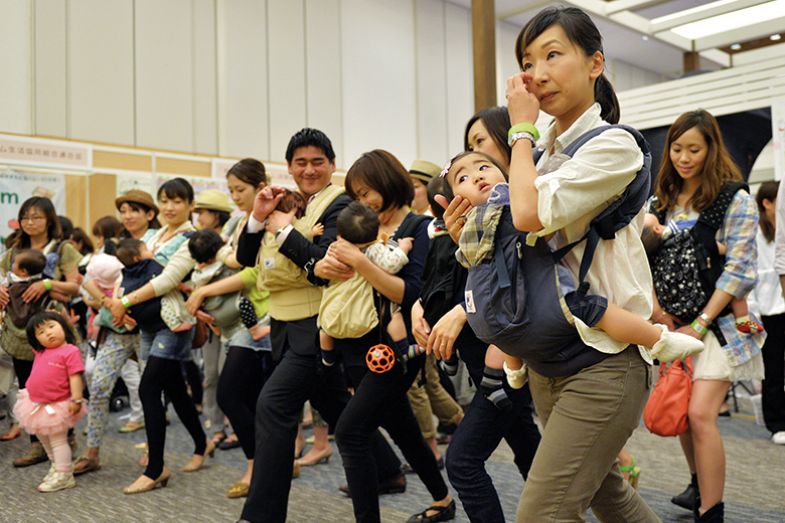
Shigakkan’s Tanioka also finds progress too slow. Despite her fluent English, nine years as vice-chair of the Japan Wrestling Federation, her university presidency and a stint in Japan’s national legislature, she had to wait nine years before being recognised as the national candidate for a position on the board (known as the “bureau”) of the sport’s global governing body, United World Wrestling.
“I’ve probably been their best candidate…not because I’m a woman but because my university has achieved more [in wrestling] than any university in Japan by far,” she says. "That’s on top of being a university president and the only one who speaks English in that old boys’ club. But in that club, the candidate always had to be an ex-wrestler, a medallist, male, and living in Tokyo – I am none of that.”
On academia specifically, she, like Ono, believes that some level of compulsion is needed to hasten change.
“I feel quotas are necessary, not forever but maybe for five to 10 years at least,” she says, citing the “rapid change” in Japanese sport after the Japanese Olympic Committee mandated that between 30 and 40 per cent of its executive board members should be women.
Other scholars, though, are warier of enacting change by force. “We have to be very careful in introducing any quota system,” warns Tokiwa University’s Tomita. During her 30 years at the UN, she saw how mandatory gender quotas for management positions, which were introduced before she joined, can sometimes backfire: “The women themselves, in many cases, were not ready for those positions,” she says.
In addition, she worries that quotas can cause employees – both male and female – to feel resentful and doubt that women in positions of power have earned their places. Instead, her university has adopted the approach of emphasising in job adverts that they seriously look for female candidates.
While she thinks there are “certainly gaps to be fixed” for women in Japanese academia, she believes the places to focus are the fields that women choose. Even today, Japanese society still has a “very strong sense of division of labour” in terms of which subjects are suited for female versus male students – something she can see clearly in her own institution, whose Faculty of Nursing and department of health and nutrition draw few men.
At home, meanwhile, women need to shake the idea that they must do everything themselves, which leads them to “overstretch and be exhausted” – particularly as, in the coming years, the burden on women is only likely to increase as Japan’s population, already the oldest in the world, ages further.
Outsourcing tasks is easier said than done, though, as Tomita knows from experience. And “I was lucky in a way because my husband also used to work at the UN and he used to have a woman boss,” she jokes. “So he’s OK having women boss him around.”
International examples were also useful for Emiko Usui, a professor of economics at Hitotsubashi, who came to see that it was possible to juggle motherhood and academia when she first got to know and admire a pregnant professor in the US back in the 1990s. But she hopes that the mentoring programme for Japanese researchers in economics that she participates in will help more women change the mould in a country where academic success and motherhood are still often viewed as mutually exclusive.
In her experience, the balancing act is becoming increasingly possible. “There are nurseries, after-school programmes and elder facilities available to us in Japan,” she says – although she laments that graduate students find it hard to enrol their children in municipal nurseries, which don't always recognise them as full-time workers. She also concedes that unscheduled childcare or eldercare emergencies can cause problems. But her colleagues at Hitotsubashi are “very collegial and mindful” and are “always kind enough to help out in a [childcare] emergency. I, myself, also help out my colleagues in an emergency. We adjust to other people’s schedules, and we have a work environment to help each other.”
She says that in her department last year, one female and two male faculty took parental leave. And she notes that Hitotsubashi supports researchers with small children to hire research assistants: “I have counted on such support which has been very helpful for my research activities.”
If Japanese academia more generally is to make significant progress on gender equality, it is clear that such attitudes and programmes will need to be widely reproduced across the nation’s campuses.
POSTSCRIPT:
Print headline: Is the balance tipping in Japan for women?
Register to continue
Why register?
- Registration is free and only takes a moment
- Once registered, you can read 3 articles a month
- Sign up for our newsletter
Subscribe
Or subscribe for unlimited access to:
- Unlimited access to news, views, insights & reviews
- Digital editions
- Digital access to THE’s university and college rankings analysis
Already registered or a current subscriber?


